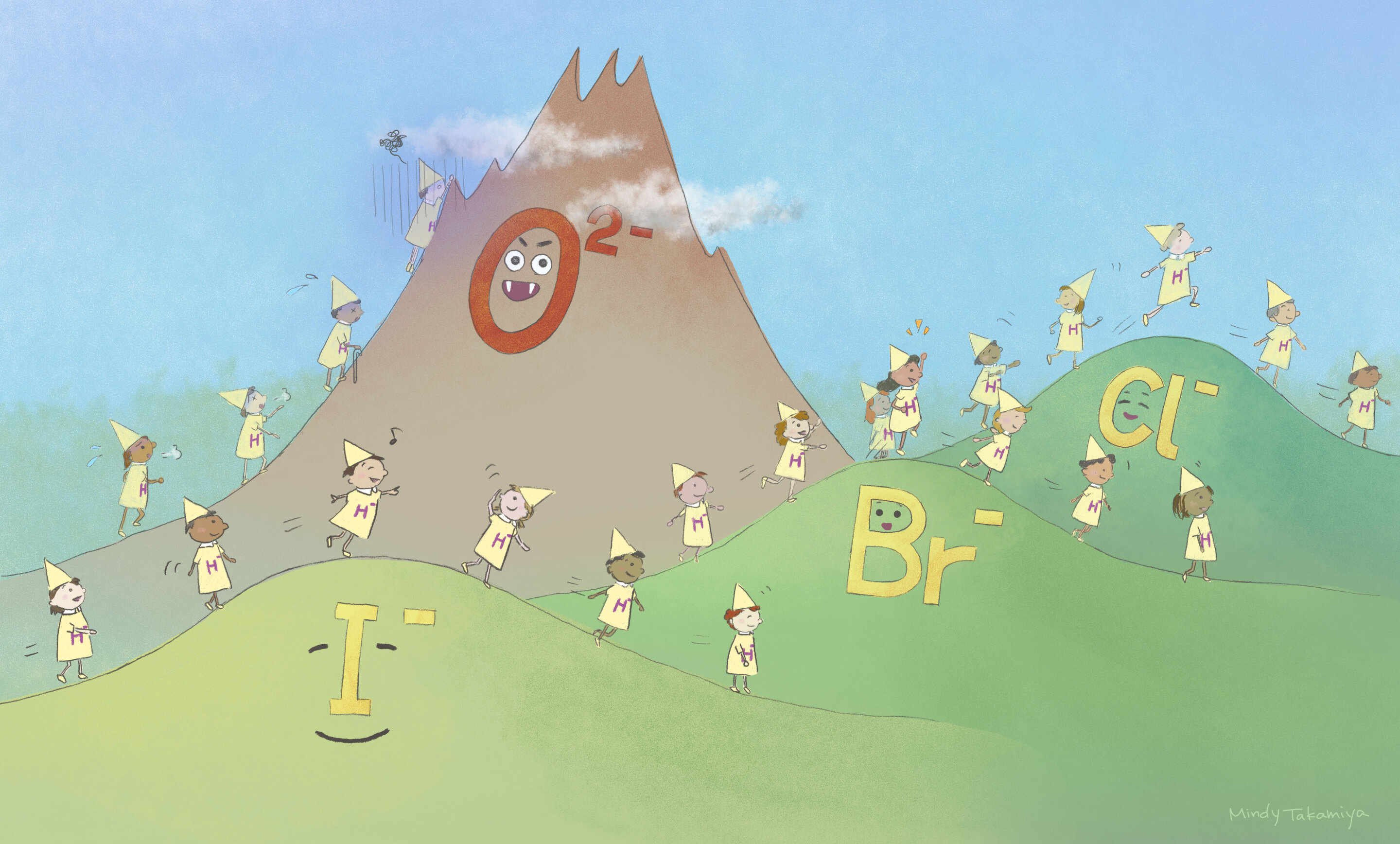
Bringing order to hydrogen energy devices

Researchers at Kyoto University’s Institute for Cell-Material Sciences (iCeMS) have developed a new approach to speed up hydrogen atoms moving through a crystal lattice structure at lower temperatures. They reported their findings in the journal Science Advances.
“Improving hydrogen transport in solids could lead to more sustainable sources of energy,” says Hiroshi Kageyama of iCeMS who led the study.
Negatively charged hydrogen ‘anions’ can move very quickly through a solid ‘hydride’ material, which consists of hydrogen atoms attached to other chemical elements. This system is a promising contender for clean energy, but the fast transport only happens at really high temperatures, above 450°C. Kageyama and his team have figured out how to make hydrogen anions travel even faster through a hydride at much lower temperatures.
“In the past, it was believed that the key to high ionic conductivity at low temperature was to stabilize a material’s high temperature phase by introducing chemical disorder,” says Kageyama. Scientists do this by adding oxygen-containing compounds called oxides into the structure. Instead, Kageyama and his colleagues introduced an ordered structure into a barium hydride crystal, which caused hydrogen anions to move significantly faster even at 200°C.
“Achieving high ionic conductivity at low temperatures by ordering the anions is unprecedented and may be applicable to various ionic conductors in the future,” says Kageyama.
Kageyama and his team changed the structure of a typical barium hydride by introducing layers on either side that are composed of hydrogen attached to another anion. By doing this, they made three different materials, using bromide, chloride or iodide anions. This provided a more ordered structure to the original material, preventing it from changing from the highly stable and symmetrical hexagon-shaped lattice usually found at high temperatures, to a less stable orthorhombic-shaped structure as it cooled. Hydrogen anions moved through the organized lattice very quickly at 200°C. The material even conducted the hydrogen anions at room temperature, albeit at a slower rate.
“Improving hydrogen anion conductivity down to room temperatures could enable low-temperature operation of electrochemical devices, like fuel cells, and open up avenues for their use as industrial catalysts or as solid hydrogen sources for hydrogenation reactions,” Kageyama says.
Highly conductive antiperovskites with soft anion lattices
“Anion ordering enables fast H− conduction at low temperatures” Science Advances (2021). DOI: 10.1126/sciadv.abf7883
Citation:
Bringing order to hydrogen energy devices (2021, June 2)
retrieved 2 June 2021
from https://techxplore.com/news/2021-06-hydrogen-energy-devices.html
This document is subject to copyright. Apart from any fair dealing for the purpose of private study or research, no
part may be reproduced without the written permission. The content is provided for information purposes only.
Stay connected with us on social media platform for instant update click here to join our Twitter, & Facebook
We are now on Telegram. Click here to join our channel (@TechiUpdate) and stay updated with the latest Technology headlines.
For all the latest Technology News Click Here
For the latest news and updates, follow us on Google News.

